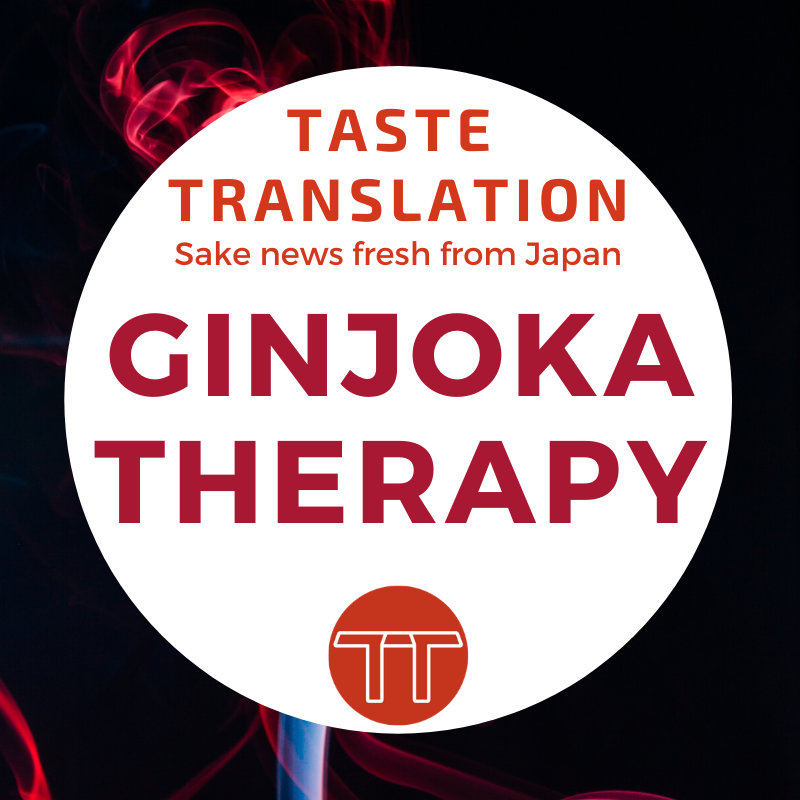
Jiji.com carries a press release for a new sub-site operated by mega-brewery Gekkeikan, focusing on the supposed comforts of ginjō aroma.
The Japanese concept of iyashi (癒し) is a slippery one to translate. It’s often rendered as “healing” but can be closer to comforting, soothing, therapeutic or restorative.
It’s applied to many things, from hot springs to beautiful scenery, but in this case it’s all about the fruity aromas found in ginjō grade sake.
Focusing on aroma as a new way to enjoy ginjō, the sub-site seems squarely aimed at women – presumably stressed, pushed for time, and therefore looking to combine their daily dose of iyashi with some liquid comfort.
The sub-site offers hints and tips for how to incorporate fruity ginjō aroma into everday “relax time” [“me time”?], accompanied by watercolour-style visuals of young women. [There’s one lone man in a suit sitting with women in lab coats at the bottom of the page, but even that seems taken from the story of developing Gekkeikan’s The Shot range.]
Pulling in some scientific support, the article defines ginjōka as the fruity and flowery smells you find among the wide range of aromas in sake. It names the source of fresh apple aroma as ethyl caproate, and rich banana from isoamyl acetate, and notes that these aroma compounds are produced by yeast as it ferments rice.
The Gekkeikan research laboratory surveyed 18 female drinkers in their 30s and 40s, asking which aromas they expected from sake, what they drank in their “relax time”, how they wanted that drink to make them feel, and what situations they normally drank in.
The results showed that most respondents expected iyashi (癒し, soothing) or hanayakasa (華やかさ, richness, “gorgeousness”) from aroma, and wanted to feel kutsurogi (くつろぎ, relaxation) and tanoshii (楽しい, enjoyment) when drinking.
The survey showed that times when the 18 women enjoyed alcohol on a regular basis were mostly during or after dinner. The sub-site therefore recommends not only dishes that go with ginjō sake but also suggests pairing it with sweets, drinking while bathing, and selecting different drinking vessels for maximum enjoyment.
Particular brewing methods are required to produce the characteristic fruity and floral ginjōka aromas, including extensive rice polishing and low-temperature brewing. Gekkeikan uses these ginjō brewing techniques to produce a range of different products, and recommends a few of them on the page.
_____________________________
Interestingly, when you open the accordion section under question 2, no-one said sake was their first choice for drinking in “relax time”. 17% said it was their second choice, and 20% said it was their third (with 27% reaching for umeshu third). Not a great result for sake as a whole! They could have hidden it just to make the page shorter, but… yeah.
The suggestions for enjoying ginjōka include having it with cheesecake, dried fruit, chocolate or ice cream, having some in a steamy bath, paying attention to the effect of the vessel rim, and pairing with dishes like white fish carpaccio.
The list of ginjōka-heavy products includes the recently released The Shot honjōzō, packaged in a 180 ml bottle-shaped can (often used for hot coffee in vending machines).
Links
- Original article (Japanese, Jiji, 26 March 2020)
- Gekkeikan (Japanese)
- Gekkeikan (English)
- Gekkeikan Ginjōka page (Japanese)
- A shot in the arm for sake sales formats? (April 14, 2019)
Want Japanese sake news straight to your inbox?
The translations/summaries of Japanese language news articles and other content provided on this site are part of a personal project to increase the amount of information about Japanese sake available in English.
Coverage of an organisation, product or event does not in any way imply approval or endorsement.
All translations/summaries and other content are © 2017-2021 Arline Lyons.